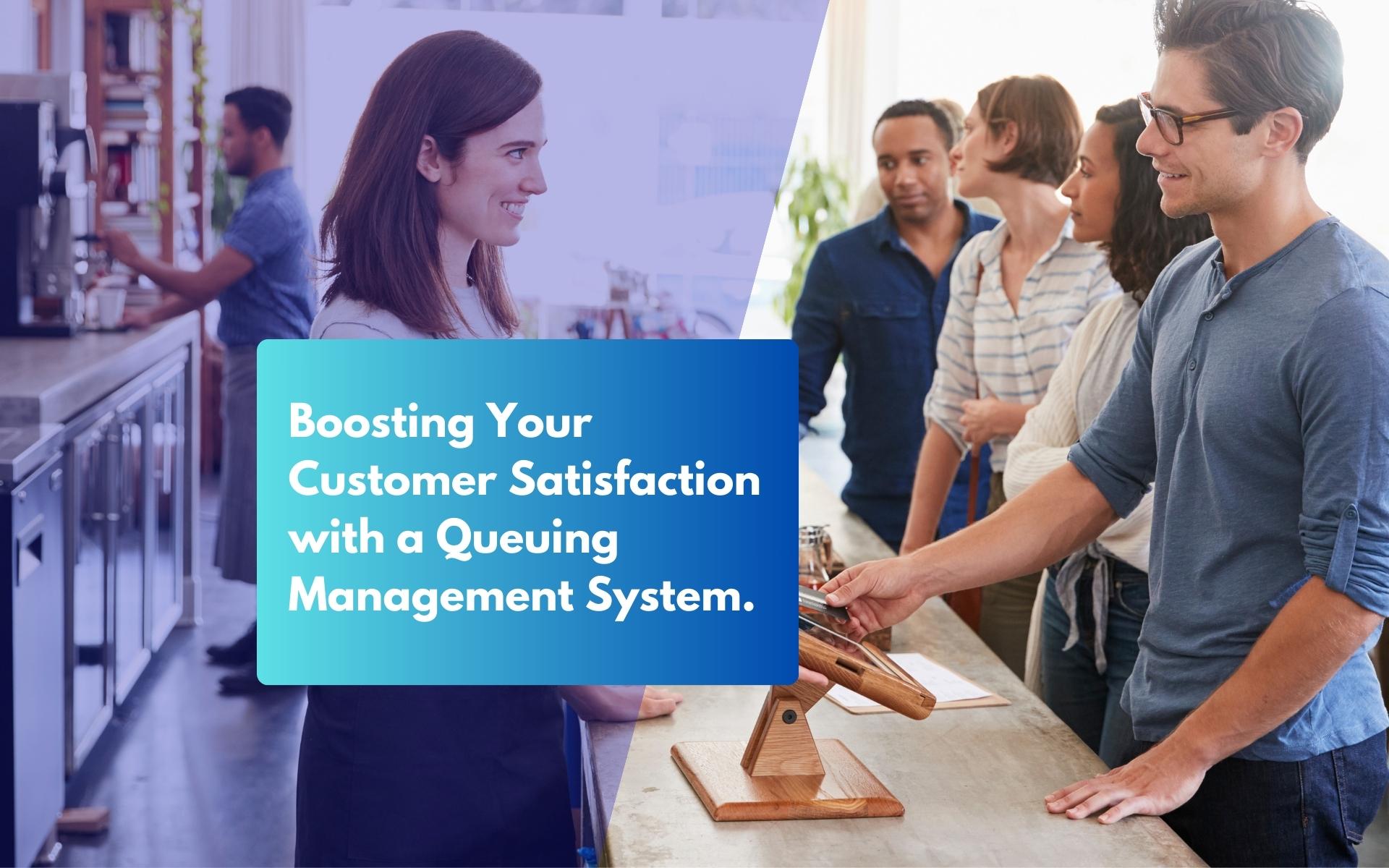Optimizing Your Customer Flow with a Queuing Management System In the relentless world of business, the efficient management of customer flow has …
Boosting Your Customer Satisfaction with a Queuing Management System.

In today’s fast-paced world, customers expect not only quality products and services but also a seamless and efficient experience when interacting with businesses. Long waiting times can be a significant source of frustration, leading to reduced customer satisfaction and even the loss of potential clients. That’s where a Queuing Management System (QMS) comes into play. In this article, we’ll explore how a QMS can boost customer satisfaction and help businesses thrive in a competitive market.
Understanding the Queuing Challenge
Before delving into the benefits of a Queuing Management System, let’s first understand the challenges businesses face when it comes to queues. Whether it’s a retail store, a healthcare facility, or a government office, waiting in line is a universal experience. However, poorly managed queues can have detrimental effects on a business’s reputation and bottom line.
- Customer Frustration
Long wait times can lead to disgruntled customers who may express their dissatisfaction through negative reviews or, worse, by taking their business elsewhere.
- Inefficiency
Manual queue management is prone to errors and inconsistencies. It can lead to uneven wait times and suboptimal resource allocation.
- Lost Revenue
Customers who walk away due to long queues represent lost revenue opportunities. They may never return or decide to go to a competitor instead.
Boosting Customer Satisfaction with a Queuing Management System
Now that we’ve established how a Queuing Management System works let’s explore how it can enhance customer satisfaction.
- Reduced Waiting Times
One of the most immediate benefits of a QMS is the reduction in waiting times. By optimizing staff allocation and appointment scheduling, businesses can ensure that customers spend less time waiting in line. Shorter wait times lead to happier customers who are more likely to return and recommend the business to others.
- Improved Service Quality
With a QMS in place, businesses can allocate resources more efficiently. This means that employees can focus on delivering high-quality service rather than managing queues manually. This leads to improved customer interactions and increased satisfaction.
- Enhanced Convenience
Modern customers value convenience, and a Queuing Management System caters to this need. With features like mobile app queuing and online appointment scheduling, customers can avoid physical waiting and choose the most convenient time to visit a business. This flexibility enhances the overall customer experience.
- Real-Time Information
Digital signage and notifications provide customers with real-time information about their queue status. Knowing how long they have to wait and which services are available keeps customers informed and reduces anxiety. Informed customers are generally more patient and satisfied.
- Data-Driven Improvements
A Queuing Management System generates valuable data and analytics. Businesses can use this data to identify bottlenecks, peak hours, and areas for improvement. By making data-driven decisions, businesses can continually enhance their queuing processes, further boosting customer satisfaction.
- Customer Feedback Integration
Some QMS solutions offer integrated customer feedback mechanisms. This allows customers to provide input on their queuing experience. Businesses can use this feedback to make real-time adjustments and address issues promptly, demonstrating their commitment to customer satisfaction.
Choosing the Right Queuing Management System
Implementing a Queuing Management System is a significant decision for any business. To ensure success, it’s crucial to select the right system that aligns with your specific needs and goals. Here are some factors to consider when choosing a QMS:
- Scalability
Ensure the system can accommodate your business’s growth and evolving needs.
- Integration
Look for a QMS that can seamlessly integrate with your existing software and hardware infrastructure.
- Customization
The ability to tailor the system to your unique requirements is essential for a successful implementation.
- User-Friendly
Choose a system that is easy for both customers and staff to use.
- Support and Training
Ensure that the vendor offers adequate support and training to maximize the benefits of the QMS.
What is a Queuing Management System?
A queuing management system is a software-based solution that helps businesses manage queues of customers or clients. The system typically includes a digital sign-in system, a ticket dispenser, and a display board that shows the current status of the queue.
The main objective of a queuing management system is to improve customer experience by reducing wait times, increasing service efficiency, and providing real-time information to customers. Such a system can help businesses improve their customer service while also enhancing their operational efficiency.
Conclusion
In a competitive business landscape, customer satisfaction is paramount. A Queuing Management System is a powerful tool that can significantly enhance the customer experience by reducing wait times, improving service quality, and providing real-time information. By implementing a QMS, businesses can not only boost customer satisfaction but also increase revenue and build a positive reputation in the market. Choosing the right system and continually optimizing it based on data-driven insights will ensure long-term success in delivering exceptional customer service.
Related Articles
Queuing Management Systems – The Key to Improving Your Business’ Bottom Line In the fast-paced world of business, time is money. Every …
Boosting Your Customer Satisfaction with a Queuing Management System. In today’s fast-paced world, customers expect not only quality products and services but …


